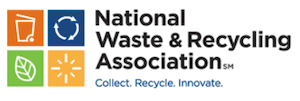Correcting the Record: Wrong Data Leads to Wrong Conclusions
The timing of the New York Times opinion editorial on February 9, 2018, by Carl Zimring could not have come at a more relevant time for the nation’s waste industry. On Monday, February 12, 2018, the National Waste & Recycling Association (NWRA) began its annual three-part series of weeklong National Safety Stand Down events. More than 200 companies and municipalities have joined this week’s Safety Stand Down focused on eliminating injuries and fatalities related to backing incidents.
After reviewing the op-ed on Friday, February 9, 2018, and the corrections made on Saturday, February 10, 2018, NWRA and our members remain disturbed by the grossly negligent accusation that the private sector of our industry is unsafe, based on the author’s misunderstanding of New York City and national waste and recycling industry demographics and statistics that are predominantly found in the U.S. Bureau of Labor Statistics (BLS) and in BLS’s National Census of Fatal Occupational Injuries in 2016 as well as misrepresented the relationship of our industry to the much broader sector in the two-digit North American Industry Classification System (NAICS) Administrative and Support and Waste Management and Remediation Services: NAICS 56.
Over and over again the author cites incorrect data leading to inaccurate conclusions and dangerous misinterpretations of the industry. The author states that “Nationwide, sanitation and recycling work remains more dangerous than policing or firefighting; in 2016, only loggers, fishermen, airplane pilots and roofers suffered a higher rate of job-related fatalities in the United States than did waste workers.” There is no “Sanitation and recycling” occupation in BLS; it is Refuse and Recyclable Materials Collectors (Occupation Code: 53-7081). The mistake lies in the fact that the author attempted to correct the fatality numbers. However, the numbers remain inaccurate and incorrectly identify NAICS code classifications for occupational codes defining the types of work being done. The author incorrectly states that “A previous version of this article misstated the number of ‘SANITATION WORKERS’ killed on the job annually. It was 31 in 2016, not approximately 365, or one a day.” The term “Sanitation Workers” is not listed anywhere in BLS’s 2016 fatality report.
NWRA is taking a strong stance on the improper conflation of the word “industry” that lists the refuse and recyclable materials collectors occupation as the fifth most dangerous occupation. The fact that of the 31 fatalities, 24 are in the private sector (77 percent) and seven are in the public sector (23 percent).
What most people don’t know is that the vast majority of fatalities are industry workers being struck by another vehicle while trying to do their job. Of the 31 Refuse and Recyclable Material Collectors fatalities in 2016, 25 were vehicle related. Of those, nine (29 percent) were industry workers.
Safety is our core value at NWRA, and for our members and industry partners. At NWRA, no work-related injury, illness and fatality is acceptable. We also recognize that our customers and the public play an important part in supporting a safe waste and recycling industry. Through initiatives like Slow Down to Get Around, legislation that we are pursuing nationally, drivers would be required to slow down when navigating around waste and recycling collection vehicles.
Our members and their employees work hard every day to keep our communities clean and safe. It is important that the difficult work they do is characterized accurately and fairly.
Sincerely,
Darrell Smith
President and CEO
National Waste & Recycling Association

